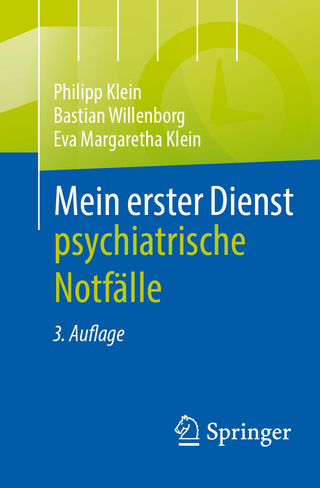
Comprehensive Electromyography
Cambridge University Press (Verlag)
978-1-107-56203-5 (ISBN)
Electromyography (EMG) is a technique for evaluating and recording the electrical activity produced by nerves and muscles. Interpreting EMG is a mandatory skill for neurologists and rehabilitation specialists. This textbook provides the reader with a detailed discussion of the concepts and principles underlying electrodiagnostic medicine. It is written for an audience without pre-existing knowledge in this discipline, including beginner technicians and physicians in training. It is an ideal review for seasoned practitioners and those preparing for board examinations. It begins with a review of the foundational sciences and works through the field in twenty chapters, including a large number of case studies demonstrating correct application and interpretation. Appendices of information frequently required in the EMG laboratory, such as Nerve Conduction Study techniques and their age-related normal values, anatomic regions assessed by each NCS and needle EMG studies, safety issues, and other important topics, are also included.
Mark A. Ferrante is a Professor of Neurology at the University of Tennessee Health Science Center, where he serves as the Neurophysiology Fellowship Co-Director and the Assistant Director of the Residency Training Program. He is also the Section Chief of Neurophysiology, the EMG Laboratory Director, and the ALS Clinic Director at the Veterans Affairs Medical Center, Memphis. He has extensively published on EMG and various neuromuscular topics; his current research interests include brachial plexopathies, neuralgic amyotrophy, and thoracic outlet syndrome, as well as the relationship between sustained gripping and carpal tunnel syndrome and the role of surgical treatment for advanced carpal tunnel syndrome. He has received numerous teaching awards for his ability to simplify complex material, including the Annual AAET Physician Recognition Award.
Part I. Introductory Chapters: 1. Basic electricity and electrical concepts pertinent to EDX medicine; 2. Instrumentation; 3. Anatomy and physiology of neurons; 4. Anatomy and physiology of the neuromuscular junction; 5. Anatomy and physiology of muscle; Part II. Nerve Conduction Studies: 6. Electrodes and nerve conduction study basics; 7. Motor nerve conduction studies; 8. Sensory nerve conduction studies; 9. The NCS manifestations of various pathophysiologies; 10. The utility of NCS for lesion localization and characterization; 11. Late responses and blink reflexes; 12. Repetitive nerve stimulation studies and their manifestations; Part III. Needle EMG: 13. The needle electrode examination (Needle EMG); 14. The Needle EMG manifestations of pathology; 15. Single fiber EMG and macro EMG; Part IV. Other Pertinent Information: 16. Assessment, prognosis, and initial management of peripheral nerve injuries; 17. The EDX Manifestations of Disorders at Various Levels of the Neuraxis; 18. Common pitfalls and their resolution; 19. Safety issues; 20. Nontechnical issues, the patient encounter, and the EDX report; Part V. Case Studies in Electrodiagnostic Medicine: Case 1 through Case X; Part VI. Appendices: Appendix 1. Anatomy of the brachial and lumbosacral plexuses; Appendix 2. Anatomy of the major upper and lower extremity nerves; Appendix 3. The myotomes of the upper and lower extremities; Appendix 4. The SNAP, CMAP, and needle EMG domains of the brachial plexus; Appendix 5. The sensory and motor NCS techniques used in our EMG laboratories; Appendix 6. The age-related, normal control values for the sensory and motor NCS; Appendix 7. Our screening sensory NCS, motor NCS, and needle EMG studies; Appendix 8. The advantages and disadvantages of the EDX test components; Appendix 9. Needle EMG findings with lesions at various levels of the neuraxis.
| Erscheinungsdatum | 17.07.2018 |
|---|---|
| Zusatzinfo | 14 Halftones, black and white; 185 Line drawings, black and white |
| Verlagsort | Cambridge |
| Sprache | englisch |
| Maße | 188 x 246 mm |
| Gewicht | 1160 g |
| Themenwelt | Medizin / Pharmazie ► Medizinische Fachgebiete ► Neurologie |
| Medizin / Pharmazie ► Medizinische Fachgebiete ► Radiologie / Bildgebende Verfahren | |
| ISBN-10 | 1-107-56203-1 / 1107562031 |
| ISBN-13 | 978-1-107-56203-5 / 9781107562035 |
| Zustand | Neuware |
| Haben Sie eine Frage zum Produkt? |
aus dem Bereich


